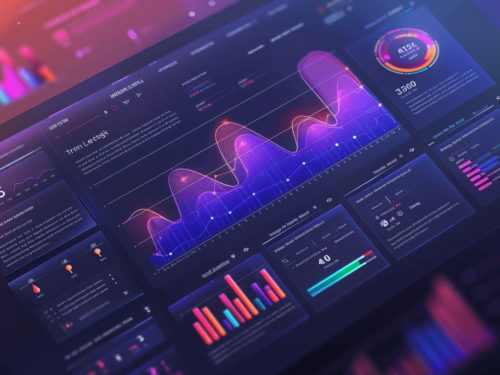Errors are inevitable, both in daily life and in the dynamic world of the Internet. One such commonly encountered error is the infamous “Error 404 Not Found.” This error can impact your website’s performance, user experience, and even its search engine ranking. In this article, we explore what this error means, its common causes, and effective strategies to address it.

Why Does Error 404 Not Found Happen?
When an Internet user requests a specific page on your website, the server attempts to locate and deliver the requested content. However, if the server cannot find the requested page, it responds with a 404 status code, signaling that the requested resource is not available.
Common Reasons for 404 Errors
Several factors can contribute to the occurrence of 404 errors. Let’s delve deeper into the common reasons for encountering this error type:
Broken Links
Broken links refer to hyperlinks that point to non-existent or unavailable web pages. Users encounter a 404 error when clicking on a link that leads to a page that has been deleted or moved. Changes in website structure, content updates, faulty external links, or migration without proper redirection can result in broken or outdated links.
Outdated URLs
Users accessing bookmarks or saved links may encounter a 404 error if the URL they are using is no longer valid. Once valid URLs can become obsolete due to changes in site structure or content reorganization. Content updates, rebranding, or restructuring can render previously valid URLs outdated.
Misconfigured Files
If configuration files are not set up correctly, it can lead to errors in directing user requests. Improper server configurations can result in the server failing to locate the requested resource, triggering a 404 error. Manual misconfigurations, migration issues, or errors in server setup can contribute to misconfigured files.
Server-Side Network Issues
Errors can occur at the server level, which means that the server cannot fulfill the client’s request for a particular resource. Problems with server settings, resource unavailability, or glitches in server functionality can lead to server errors.
Human Error
Human errors can introduce inconsistencies in website structure or permissions, causing the server to be unable to fulfill requests. Common errors made by individuals during website management include incorrect manual updates, content management, link placement, and file permission settings.
Understanding these common reasons for 404 errors is essential for effective troubleshooting and resolution. Regular website maintenance, thorough checks of server configurations, and user-friendly redirection strategies are vital in preventing and addressing these issues promptly. By mitigating these common causes, you can enhance the overall user experience, reduce frustration, and maintain a seamless and error-free online presence.
The Impact of 404 Error Messages on the User Experience
Encountering a 404 error can significantly impact the way visitors perceive and interact with your website. When users come across a 404 error, frustration often sets in, as they are unable to access the content they were looking for. The poor user experience caused by encountering error codes can lead to a higher bounce rate, meaning users leave the site without exploring further. A higher bounce rate is a negative signal to search engines, indicating that visitors are not finding what they need on your site. This, in turn, can affect your website’s search engine ranking and diminish the quality of user engagement.
Addressing 404 Errors
To ensure a smoother user experience and maintain a positive SEO standing, it’s crucial to address 404 errors promptly. Here are effective strategies to mitigate the impact:
Regular Website Maintenance
Conduct routine checkups on your website to identify and fix issues such as broken links, outdated content, and misconfigured files. Regular maintenance ensures that your website’s structure remains intact, reducing the likelihood of users encountering 404 errors.
Useful Tools
Employ online tools like Google Search Console, Dead Link Checker, and Link Checker. These tools help identify broken links and other common issues that might trigger 404 errors. By promptly addressing these issues, you enhance the overall health of your website. Additionally, redirection plugins allow you to redirect users from outdated URLs to relevant and active pages. By implementing proper redirection, you not only prevent 404 errors but also guide users to the most current and relevant content.
Server Configuration Checks
Address server-side errors by examining server configuration files, including .htaccess files. Ensure these files are correctly configured to prevent server-related issues that could result in 404 errors. Regular checks and updates to server configurations contribute to a smoother user experience.
Optimize DNS Settings
Use DNS lookup tools to verify and optimize DNS settings. DNS-related errors can contribute to 404 issues. By ensuring accurate and optimized DNS settings, you reduce the risk of users encountering errors when trying to access your website.
By implementing these strategies, you not only minimize the negative impact of 404 errors on user experience but also contribute to a more robust and search engine-friendly website. Consistent efforts in addressing and preventing these errors enhance user satisfaction and positively influence your website’s overall performance.
The Psychology Behind 404 Errors: Managing User Expectations
In the intricate web of online experiences, encountering a 404 error can evoke a range of emotions in users, shaping their perception of a website. The HTTP 404 status code carries substantial psychological weight, disrupting the expected flow of navigation and leaving users to grapple with a ‘page not found’ dilemma.
Understanding the psychology behind 404 errors involves recognizing the impact on user experience and the consequent emotions it may trigger. Users may feel a sense of disappointment, confusion, or even frustration when faced with the abrupt halt to their intended journey through a website. To effectively manage user expectations, website owners can employ strategic measures.
Crafting user-centric 404 pages with clear and empathetic messages becomes paramount in redirecting user emotions. These customized pages not only apologize for the inconvenience but also guide users back on track, offering alternative routes to relevant content. Moreover, seamless redirection strategies, perhaps utilizing server configurations or WordPress plugins, can transform a potential setback into an opportunity to enhance user engagement.
In essence, the psychology behind 404 errors underscores the importance of acknowledging and addressing user emotions. By weaving a considerate user experience into the fabric of error management, website owners can turn what could be a stumbling block into a stepping stone for user satisfaction and loyalty.

Error 404 Not Found Effects on Search Engine Optimization (SEO)
Search Engine Optimization (SEO) is a set of techniques and practices designed to elevate a website’s visibility, leading to more visitors to your website. SEO involves meticulously crafting metadata, optimizing keywords, and navigating the intricacies of backlinking to ensure that websites become active contenders for top-ranking positions.
The presence of frequent errors can severely impact your website’s SEO. Search engines are bound to interpret broken links and missing content as a lack of relevancy, negatively affecting your search engine ranking. By addressing these types of errors promptly, you can enhance your website’s visibility in search results.
ProStar SEO: Débloquer Votre Succès Numérique avec une Méthode SEO Scientifiquement Prouvée
Vous vous demandez pourquoi votre site Web n’attire pas assez de trafic? Si votre concurrence vous surpasse constamment dans les recherches Google, la clé de votre succès réside dans la mise en œuvre d’une stratégie SEO solide. En tant qu’agence SEO n° 1, ProStar SEO est prêt à transformer votre présence numérique, augmenter le trafic vers votre site Web et propulser votre classement dans les recherches Google à de nouveaux sommets.
Alors que Google garde confidentielles les composants de son algorithme, nous utilisons des recherches externes pour identifier les principaux facteurs SEO pour le succès en ligne. Notre méthode scientifique de SEO garantit des résultats rapides et transparents pour votre entreprise. Notre objectif est d’élever votre classement dans les résultats de recherche, d’attirer plus de trafic Web et d’augmenter les revenus de votre entreprise.
The Importance of Having Good SEO
Having a well-optimized website is crucial for several reasons:
- Increased Visibility: Good SEO practices help your website rank higher in search results. This increased visibility makes it more likely that users will discover and visit your site when searching for relevant topics or products.
- Credibility and Trust: Websites that appear at the top of search results are often perceived as more credible and trustworthy by users. A strong SEO strategy can enhance your site’s reputation and authority in your industry.
- Better User Experience: SEO is not just about pleasing search engines; it’s also about providing a positive experience for users. Well-organized content, fast-loading pages, and a clear site structure contribute to a better user experience.
- Competitive Advantage: Competition for online visibility is fierce. A solid SEO strategy can give your website a competitive edge by ensuring it stands out in search results, attracting more traffic and potential customers.
In summary, addressing and minimizing 404-page errors is not just about maintaining a technically sound website; it’s also about preserving and enhancing your site’s visibility, credibility, and user experience – all critical components of successful SEO.
Take Control of Your Online Presence with ProStar SEO | Canada’s #1 SEO Agency
At ProStar SEO, we are committed to transforming your digital landscape. Our scientifically proven SEO methodology goes beyond the conventional, focusing on the key elements that define your website’s success. We are ready to offer a comprehensive suite of services, including real-time analysis, monitoring competition positioning, bilingual website rewriting, enhanced sales through local SEO, and strategic Google Ads and Facebook campaigns.
From optimizing internal links to leveraging powerful SEO tools, we ensure your website’s technical health and relevancy are top-notch. Join forces with ProStar SEO to achieve enhanced visibility, increased traffic, and sustained online success. Contact us today for a free SEO audit and let our results-driven strategies propel your website to new heights.
Crawling and Web Servers
Understanding how web servers handle crawling is crucial for optimizing dynamic websites. Web crawlers, also known as spiders, navigate through web pages, encountering various status codes like internal server errors (500) or successful responses (200). For optimal SEO performance, it’s essential to ensure that servers respond efficiently to crawling requests, minimizing errors and enhancing the user experience. Dynamic websites, with constantly changing content, require robust server-side programming to facilitate smooth crawling and indexation by search engines like Google.
Error Handling
Effective error handling is a cornerstone of a seamless user experience and strong SEO performance. Dealing with page not found (404) errors involves creating custom 404 pages, providing users with helpful information and maintaining a user-friendly interface. Additionally, addressing different status codes such as bad requests (400), forbidden errors (403), or internal server errors (500) is crucial for identifying and resolving issues promptly. Paying attention to file permissions is equally vital, ensuring that web servers can access and serve files without errors.
Redirection and URL Handling
Strategic URL redirection is a key aspect of SEO services. Implementing proper redirection techniques through the .htaccess file helps manage changes in URLs, preventing errors like old URLs returning 404 pages. Efficiently handling requested pages during redirection ensures that users and search engine crawlers seamlessly transition to the new URLs. A well-executed redirection strategy not only improves user experience but also maintains the integrity of a website’s SEO performance.
SEO and Search Engines
SEO agencies play a pivotal role in optimizing websites for search engines. Beyond addressing errors, they focus on implementing SEO best practices to enhance a website’s visibility. Leveraging tools like Google Search Console allows agencies to monitor crawling issues, error pages, and other performance metrics. Google Analytics provides valuable insights into user behavior, helping agencies tailor strategies to improve both user experience and search engine rankings.
Web Page and User Experience
Navigating web pages seamlessly is fundamental for user satisfaction and SEO success. Web browsers, through the address bar, provide users with a direct means of accessing content. Optimizing web pages for a positive user experience involves minimizing errors in the address bar, ensuring that users effortlessly reach their desired content. SEO agencies prioritize the alignment of web page design with user experience, fostering engagement and improving search engine rankings.
XML Sitemaps
XML sitemaps serve as a valuable tool for SEO agencies in facilitating efficient crawling and indexing by search engines. By providing a comprehensive map of a website’s structure, XML sitemaps guide web crawlers to relevant pages, reducing the likelihood of encountering 404 errors. Including XML sitemaps as part of an SEO strategy ensures that search engines can quickly and accurately index a website’s content, contributing to improved visibility in search results.
Miscellaneous
In the realm of SEO, addressing broken links is essential for maintaining a healthy website. Broken links not only hinder user experience but also negatively impact search engine rankings. SEO agencies employ strategies to identify and rectify broken links promptly, ensuring that users and search engines encounter seamless navigation. By actively managing miscellaneous issues like broken links, agencies contribute to the overall health and performance of a website in the digital landscape.



